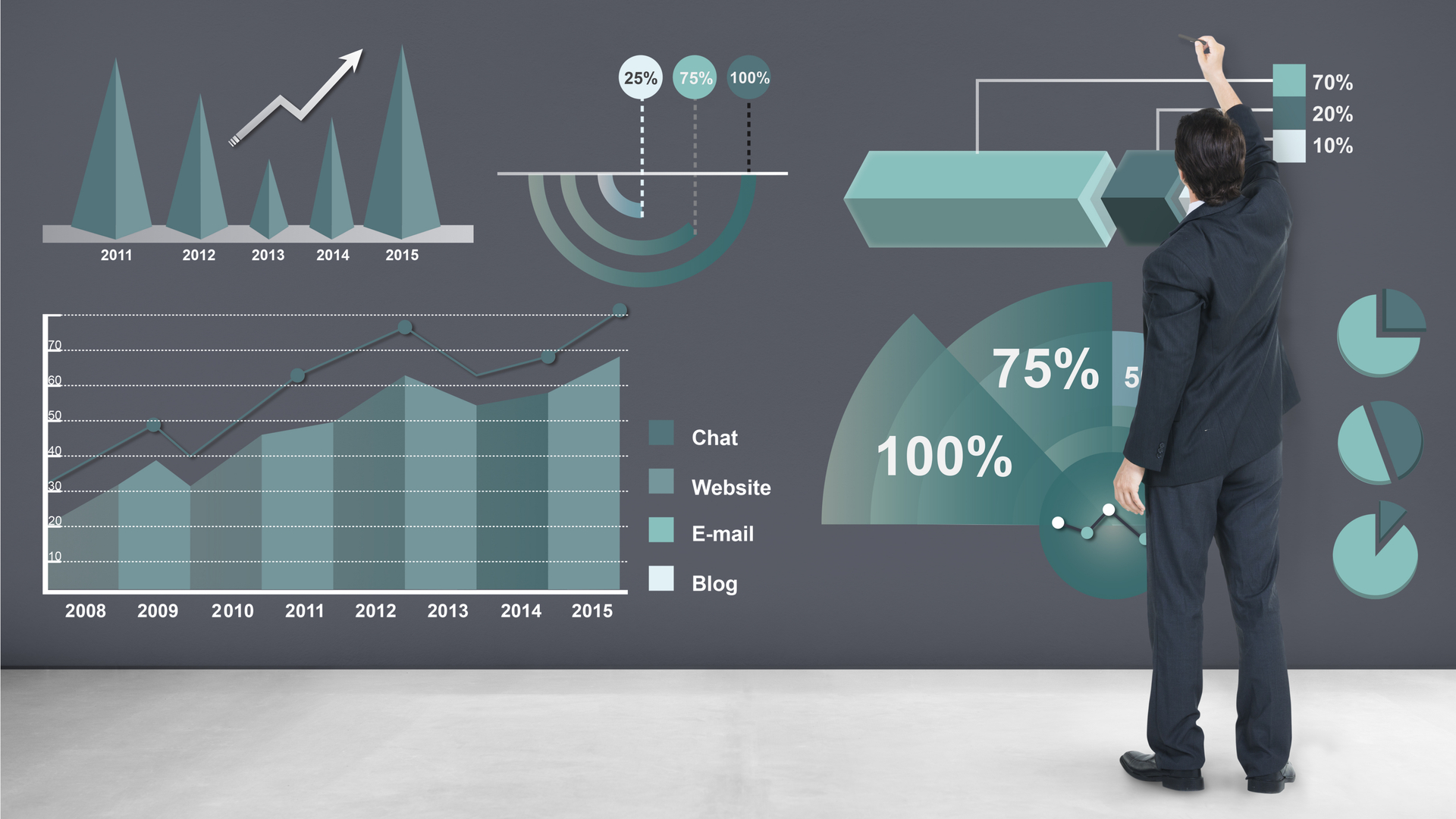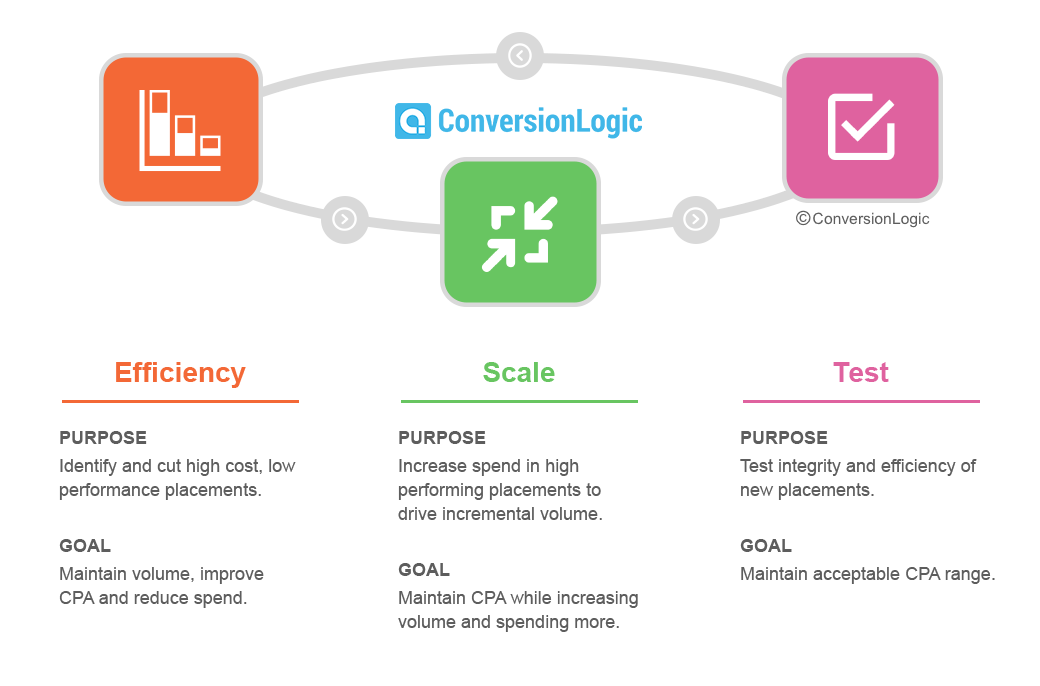How to implement an optimization framework for long-term attribution success
Columnist Alison Lohse offers a framework around which to structure your attribution program and stay aligned to organizational goals by strategically balancing efficiency, scale and testing.

Congratulations! You made it through the early days of your attribution program. You implemented the four steps to ROI-positive marketing attribution and proved that the system works. You got the team on board, clearly defined your objectives, isolated specific channels with tactical tests, then expanded into strategic cross-channel analysis. The system is officially up and running. So now what?
Long-term marketing attribution success depends on an operational approach to dialing your media investments up and down. At my company, Conversion Logic, we apply an “Optimization Framework” methodology to ensure discipline and repeatability. When most customers get their first insights, they are either paralyzed with options or they want to turn every optimization knob and lever simultaneously. Both approaches make it difficult to determine causality of changes and can be inefficient.
Our framework helps our clients be more deliberate in meeting their business objectives. It includes three main components: managing efficiency, finding scale and testing.
- Efficiency strategies aim to maintain your current volume, reduce spend and improve your CPA (cost per acquisition). In other words, they help you target the same customers, but spend less money and get better ROI. To do so, your attribution system helps you identify and cut high-cost, low-performance placements, creatives or keywords.
- Scale efforts focus on maintaining your CPA while increasing volume and spend. While this may sound straightforward, growing your programs without losing conversions is traditionally tough. Attribution gives you the insight to increase spend on the right high-performing placements, creatives or keywords to drive incremental and sustainable volume. This step typically follows the efficiency component, using leftover budget gleaned from efficiency tactics to fund scale initiatives.
- Testing tactics allows you to try new things or prove hypotheses in a structured way. While efficiency and scale strategies rely on moving levers up and down — same audience/less spend, more audience/more spend — testing lets you pose and answer specific questions. Say a branded keyword that has long been part of your SEO/SEM program has proven less effective than you thought… but you’re terrified to turn it off. Run a beta test to see the actual impact on the bottom line before completely pulling the plug, or conversely, before you turn on the firehose with new, unproven media, creative or channels. Attribution software also helps optimize the duration of your testing, so you know when to wrap up a test and use it as a benchmark.

Think of the Optimization Framework, and your attribution efforts in general, like an exercise program. For most people, an ideal exercise regimen means losing weight, gaining muscle and doing it without getting bored or falling into a rut.
The efficiency levers enable you to lose weight — to cut the fat from your media campaigns so that the whole system runs more effectively. The scale levers build your marketing “muscle,” giving you the strength and power to find more customers and volume.
Testing comes into play when you want to try something new. You want to see if it will work for you, you’re interested by the idea, but you’re not willing to completely change your ways. Perhaps your current activities aren’t delivering the way they used to, or you want to exercise new muscle groups. Testing is a runner going to yoga once a week, or a weight lifter trying out spin. There’s little risk in showing up to one yoga class, but tremendous potential benefit to your body and your mind.
All three of these elements work together to optimize your media spend, often in close concert. During typical time periods — not peaks or lulls determined by your industry or seasonality — we recommend alternating periods of cutting waste (efficiency) and scaling programs. Specific seasons may call for one or the other or none, with a focus on testing instead. The best timeline for your business depends on your audience and objectives; the point is that the three legs of the optimization stool always work together to support the overall function.
A sample timeline based on the Optimization Framework:

What does this look like in practice? Often, this framework generates insights you can’t get anywhere else. Let’s say you ran a test on specific creative execution. With traditional analytics models like last-click, you may see that a particular creative didn’t perform well and quickly optimize it out.
The type of testing enabled by cross-channel attribution, however, might show you that that creative provides lift to other channels or keywords, and while it seems underperforming in isolation, it is actually a critical step on the path to conversion. That insight then feeds back into your efficiency and scale efforts, ensuring that the right elements are included when you cut or grow your programs.
The Optimization Framework offers a scaffold around which to structure your attribution program and stay aligned to organizational goals. It helps you stay lean while continuing to grow and remain responsive while reducing risk and working from a plan. By strategically balancing efficiency, scale and testing, you get the detailed granularity and big-picture insights that deliver lasting attribution success.
Contributing authors are invited to create content for MarTech and are chosen for their expertise and contribution to the martech community. Our contributors work under the oversight of the editorial staff and contributions are checked for quality and relevance to our readers. MarTech is owned by Semrush. Contributor was not asked to make any direct or indirect mentions of Semrush. The opinions they express are their own.
Related stories
New on MarTech